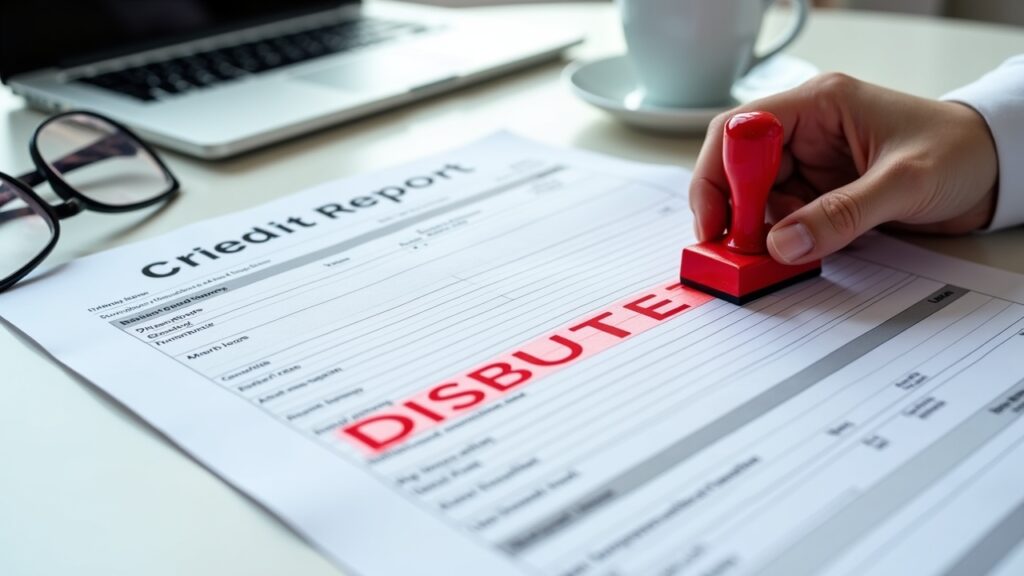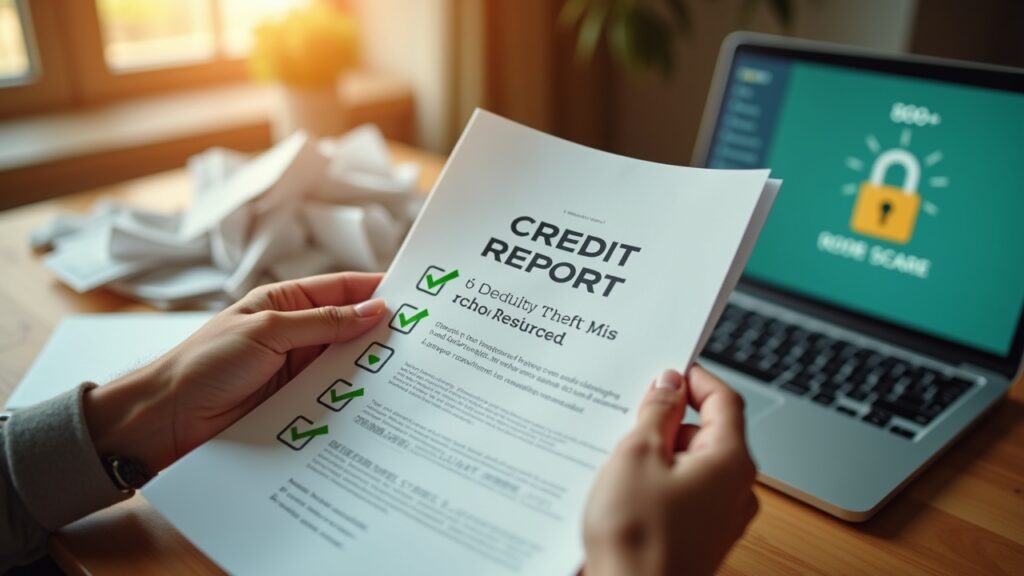Advertisements
Did you know that identity theft victims spend an average of 200 hours cleaning up the mess? I learned this the hard way when someone decided my Social Security number looked better in their wallet than mine!
Let me tell you, discovering you’re an identity theft victim feels like getting punched in the gut. One morning, I’m sipping coffee and checking my bank app, and boom – there’s charges for a luxury vacation in Miami that I definitely didn’t take. My credit score had plummeted from a respectable 720 to barely 500. Talk about a wake-up call.
The First Steps I Took (And Why Speed Matters)

When identity theft strikes, every minute counts. I immediately called my bank – still in my pajamas, mind you – and froze all my accounts. Then I filed a report with the FTC’s Identity Theft website, which became my lifeline throughout this whole ordeal.
Here’s what I wished I’d known sooner: you gotta act fast. The longer fraudulent accounts stay open, the more damage gets done to your credit. Within 48 hours, I’d contacted all three credit bureaus (Equifax, Experian, and TransUnion) to place fraud alerts on my reports.
Pro tip: Don’t just call – follow up everything in writing. I learned this after Experian “lost” my first fraud alert request. Yeah, that was fun to deal with.
Building Your Identity Theft Recovery Game Plan
After the initial panic subsided, I realized I needed a solid strategy. First thing was getting those credit reports – and I mean all of them. You’re entitled to free copies when you’re a fraud victim, so I grabbed mine from AnnualCreditReport.com.
Reading through them was like finding out someone had been living a whole other life with my name. There were credit cards I’d never applied for, addresses I’d never lived at, and even a car loan! The frustration was real, folks.
I created what I called my “fraud binder” – basically a three-ring binder where I kept every document, every letter, every phone log. Sounds old school, but when you’re dealing with multiple agencies and creditors, organization is your best friend. Each section had copies of police reports, dispute letters, and responses from creditors.
The Credit Repair Marathon Begins
Disputing fraudulent accounts ain’t exactly a walk in the park. Each credit bureau has their own process, and honestly, it felt like they were designed to be confusing on purpose. I spent hours writing dispute letters, making sure to include phrases like “fraudulent account” and “identity theft victim” in every single one.
Some creditors were surprisingly helpful – shoutout to my actual credit card company who removed the fraudulent charges within a week. Others? Well, let’s just say I got real familiar with their hold music. One collection agency insisted I owed them money for an account opened when I was supposedly living in Nevada. (Spoiler: I’ve never even visited Nevada!)
The key was persistence and documentation. Every phone call got logged with date, time, and the rep’s name. Every letter was sent certified mail with return receipt requested. Overkill? Maybe. But it saved my bacon when one creditor claimed they never received my dispute.
Tools and Resources That Actually Helped
Throughout this journey, certain tools became invaluable. Credit Karma let me monitor my credit for free, though their scores aren’t always exact, they helped me track progress. I also signed up for a credit monitoring service that alerted me to any new accounts or inquiries.
The FTC’s identity theft affidavit was a game-changer. Instead of filling out separate forms for each creditor, I could use this one document for most disputes. Talk about a time saver!
I also discovered that many states have identity theft passport programs. Mine didn’t, but if yours does, get one ASAP. It’s basically official proof you’re a victim, which can speed up the dispute process significantly.
The Long Road Back to Good Credit

Here’s the truth nobody tells you: credit repair after identity theft isn’t quick. It took me nearly 18 months to get my score back above 700. Some accounts came off within weeks, others required multiple disputes and even threats of legal action.
The emotional toll was real too. There were nights I’d lie awake wondering if I’d ever be able to buy a house or if every loan application would get rejected. My partner got pretty tired of hearing me rant about credit bureaus over dinner!
But slowly, things improved. Each removed account bumped my score up a bit. Each successful dispute felt like a small victory. I even started learning about credit utilization ratios and payment history – stuff I’d never paid attention to before.
Your Path Forward After Identity Theft
If you’re going through this nightmare right now, know that it does get better. Your credit can recover, though it takes patience and probably more phone calls than you’d like. Start with the basics: file that police report, contact the credit bureaus, and begin disputing every fraudulent item.
Remember to be kind to yourself during this process. Identity theft isn’t your fault, even if it feels like it sometimes. Take breaks when you need them, celebrate the small wins, and don’t be afraid to ask for help from consumer protection agencies or even a credit repair attorney if things get really complicated.
Most importantly, once you’ve cleaned up the mess, put protections in place. I now have credit freezes that I only lift when needed, use identity monitoring services, and check my accounts regularly. Paranoid? Maybe a little. But I’m never going through that again if I can help it!
For more tips on managing your finances and protecting your credit, check out other helpful articles at The Clear Cents. We’ve got your back on your journey to financial wellness – because nobody should have to figure this stuff out alone.



